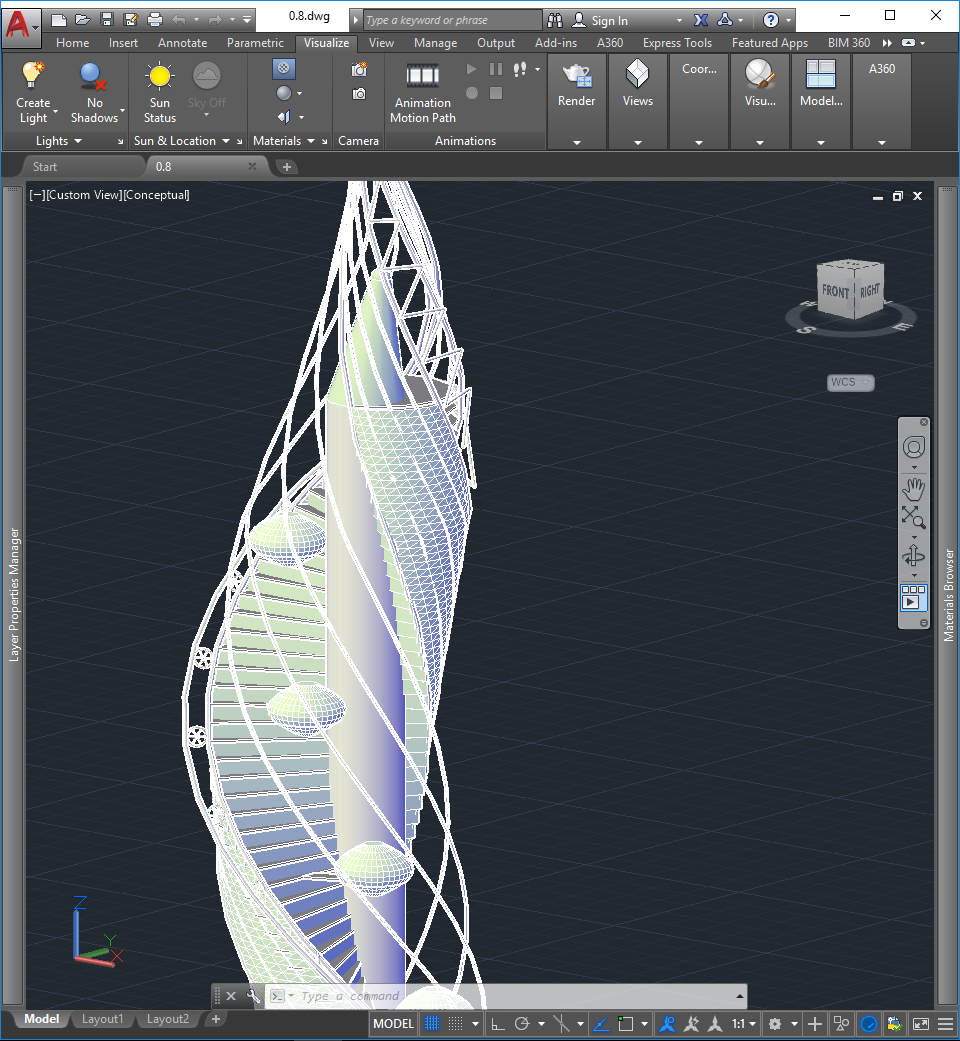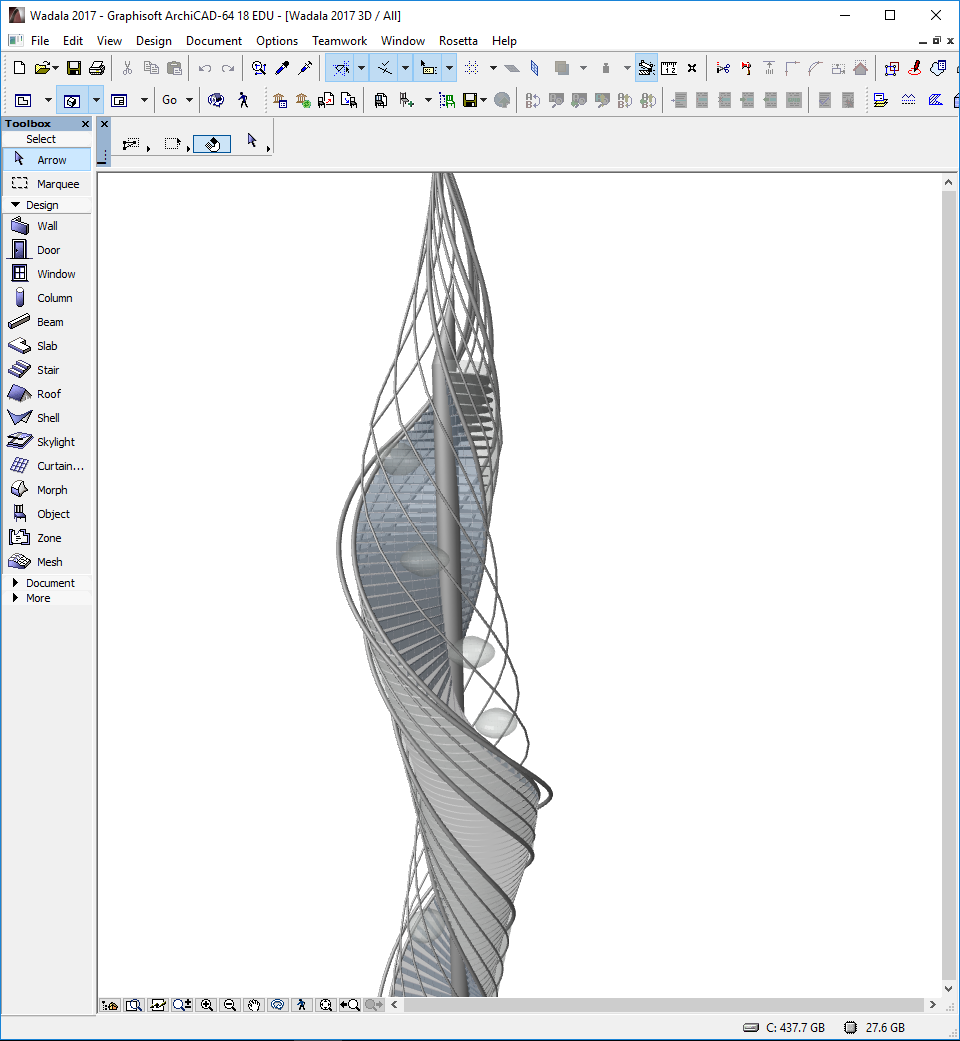Wadala Tower
Original project: James Law Cybertecture
Programming Language: Racket
Algorithmic Design Tool: Rosetta
The Wadala Tower project, in Mumbai from James Law Cybertecture, presents a rather complex shape that categorize it as buildings that clearly benefit from an algorithmic-based approach.
The case study was implemented in Rosetta, a portable generative design tool capable of generating parametric models in both CAD and BIM tools. Rosetta’s abstraction layer contains the common functionalities amongst CAD tools, such as procedures to create geometric shapes, like circles and boxes, and procedures that apply geometric transformations, including lofts, extrusions and sweeps.
Rosetta also includes operations for modeling the parts of a BIM model, such as slabs, walls, columns, and beams, among others. These operations are common to the two currently integrated BIM tools, meaning that from the same algorithmic description, Rosetta is able to produce similar models in both tools.


